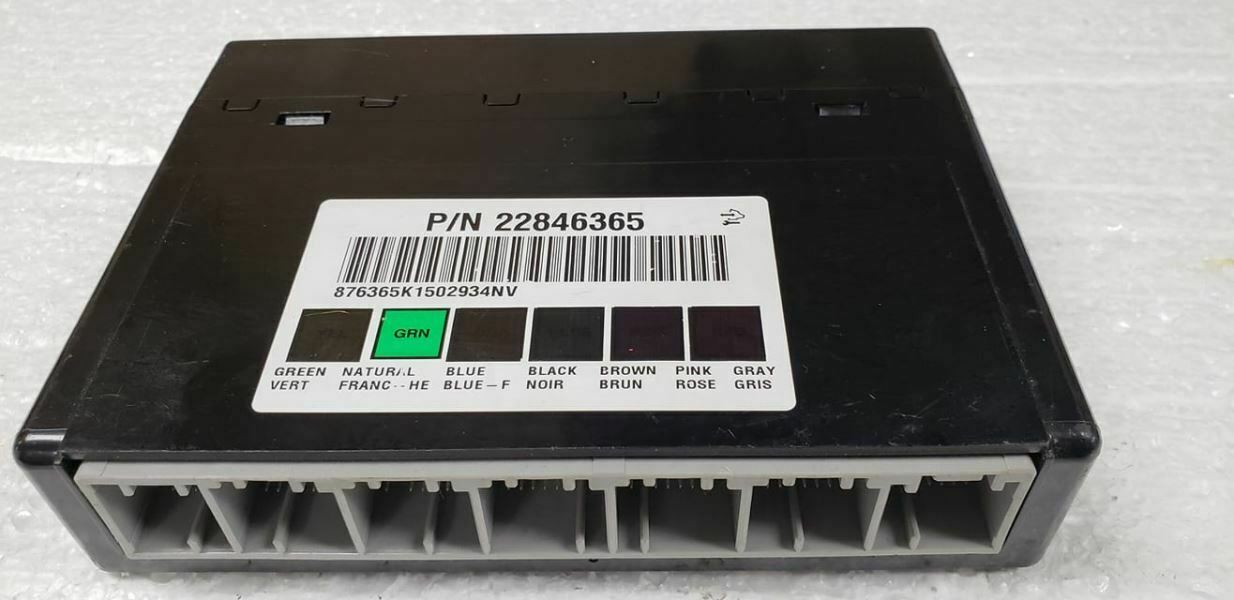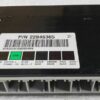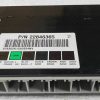Restore Full Control Over Your GM Truck or SUV
Are you battling frustrating electrical gremlins in your vehicle? Intermittent power windows, flickering dash lights, a security system that acts on its own, or even a no-start condition can all point to a failing Body Control Module (BCM). This vital component is the central nervous system for your vehicle’s body electronics, and when it falters, it can make your reliable truck or SUV feel unpredictable. Get back in command with our professionally programmed BCM, designed to be a direct, hassle-free solution that gets you back on the road with confidence.
Common Symptoms & Your Solution
A faulty BCM can manifest in numerous ways, often leaving owners and even some mechanics chasing problems. If you’re experiencing any of the following, this module is the definitive fix:
- Erratic or non-functional power windows, door locks, and interior lights.
- Dashboard warning lights that illuminate for no reason.
- Problems with the radio or infotainment system.
- Vehicle security system faults or the engine refusing to crank.
- Inconsistent operation of heating and A/C blower motor controls.
Our Programmed 22846365 BCM arrives ready for installation. We flash the module with the latest GM software updates using your vehicle’s specific VIN, ensuring seamless communication and perfect compatibility right out of the box. This critical service saves you a costly trip to the dealership and the expense of their programming fees.
Features & Tangible Benefits
- ✔ Plug & Play Installation: We handle the complex programming for you. Simply provide your VIN during checkout, and the module will arrive ready to be installed without the need for a specialized scan tool.
- ✔ No Core Charge: Forget the hassle and expense of returning your old part. You can keep your original module, making the process simpler and more convenient.
- ✔ Latest OEM Software: Your BCM will be loaded with the most current software from GM, ensuring optimal performance and correcting potential factory bugs.
- ✔ Cost-Effective Repair: Avoid the high labor rates and programming costs of a dealership visit. This is the most direct and economical way to restore your vehicle’s electronic functions.
- ✔ Peace of Mind Guarantee: This unit is backed by our one-year replacement warranty. Drive with confidence knowing your purchase is protected.
Expert Insight: The Brains of the Operation
Think of the BCM as the traffic controller for all non-engine-related electronics. It manages everything from the chime that reminds you to put on your seatbelt to the complex logic that controls your power locks and anti-theft system. Over time, factors like voltage spikes, moisture intrusion, or simple electronic fatigue can cause these modules to fail. Replacing it with a used, non-programmed unit from a salvage yard is a gamble that often leads to more problems. Our solution provides a reliable part with fresh, vehicle-specific software, ensuring all systems integrate and function exactly as the factory intended. This is the professional-grade fix your hard-working truck or family SUV deserves.
Frequently Asked Questions
How does the VIN programming process work?
After you complete your purchase, you will need to provide us with your vehicle’s 17-digit VIN. Our technicians use this number to access the correct factory software and calibration files for your specific model and options. We then flash this data onto the module before it ships, making it a true plug-and-play part for your vehicle.
Will I need to perform any procedures after installation?
In some cases, yes. The two most common procedures are an Airbag System Sync (if the airbag light comes on) and a Brake Pedal Position Relearn. These may require a professional scan tool to complete. Please refer to your vehicle’s service manual or consult with a qualified technician for specific requirements.
My original BCM has a different part number. Will this still work?
Yes. This module is a direct replacement for several part numbers, including 22737275 and 22846364. As long as your vehicle’s year, make, and model are on our compatibility list, this Programmed 22846365 BCM will function correctly once programmed to your VIN.
Is this a brand new part?
This is a top-quality, inspected, and tested recycled OEM part. Each unit undergoes a rigorous verification process to ensure it meets or exceeds factory specifications before being programmed and shipped to you.
What if I have installation questions?
While we program the module for you, the physical installation should be performed by someone with mechanical experience. We always recommend consulting a factory service manual for the proper removal and installation procedure for your specific vehicle. Our customer service team is also available to help with any questions about the programming process.


